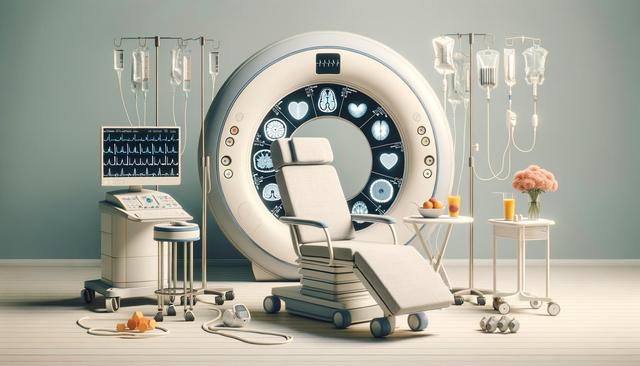Recognizing the Warning Signs of a Stroke
Understanding how to identify the early signals of a stroke is vital to reducing long-term damage and increasing the chances of recovery. The faster medical attention is received, the better the potential outcomes. The most common signs can be remembered using the acronym FAST: Face drooping, Arm weakness, Speech difficulty, and Time to call emergency services. These symptoms may appear suddenly and escalate quickly, making immediate response critical.
In addition to these core signs, other possible indicators include:
- Sudden numbness or weakness, especially on one side of the body
- Sudden confusion or trouble understanding
- Vision problems in one or both eyes
- Sudden dizziness, loss of balance, or coordination
- Severe headache with no known cause
Recognizing the warning signs of a stroke is the first step in ensuring prompt treatment. Observers should not wait to see if symptoms improve on their own, as delays can lead to irreversible brain damage. Immediate action can save lives and significantly improve recovery outcomes.
Different Types of Stroke and Recovery Timelines
Strokes are generally categorized into three main types: ischemic, hemorrhagic, and transient ischemic attacks (TIAs). Each type affects the brain differently and requires specific medical approaches. Ischemic strokes, caused by a blockage in blood vessels supplying the brain, are the most common. Hemorrhagic strokes occur when a blood vessel ruptures, leading to bleeding in or around the brain. TIAs, often called mini-strokes, are temporary blockages and serve as crucial warning signs for potential major strokes.
Recovery timelines vary depending on the type of stroke, severity, location in the brain, and how quickly treatment was initiated. In general:
- TIAs may resolve within minutes to hours but still require medical evaluation
- Mild ischemic strokes may show significant improvement within weeks
- Severe strokes may require months or even years of rehabilitation
Different types of stroke and recovery timelines highlight the importance of early intervention and individualized treatment plans. Patients and families should work closely with healthcare providers to understand the expected course of recovery and set realistic goals.
Rehabilitation and Daily Exercises for Post Stroke Recovery
Rehabilitation plays an essential role in regaining independence and functionality after a stroke. Programs are often tailored to the patient’s needs and may include physical, occupational, and speech therapy. Consistency and patience are key to making progress. Rehabilitation and daily exercises for post stroke recovery focus on rebuilding strength, coordination, and cognitive function.
Common types of rehabilitation exercises include:
- Stretching and range-of-motion exercises to improve flexibility
- Strength training to rebuild muscle control
- Balance and coordination drills to reduce fall risk
- Speech and language exercises for communication skills
Engaging in daily routines and practicing learned skills at home can significantly support long-term recovery. Caregivers should encourage and assist with exercises, while keeping track of progress and any setbacks. Maintaining a supportive environment and celebrating small wins can positively influence motivation and overall well-being.
When to Seek Medical Help and the Importance of Monitoring
Quick response remains a vital element in treating strokes effectively. Knowing when to seek medical help and the importance of monitoring symptoms can prevent complications and improve recovery rates. Even after initial treatment, continued vigilance is necessary to detect recurring issues or side effects from medications.
Medical assistance should be sought immediately if:
- New or recurring stroke symptoms appear
- There are sudden changes in behavior or alertness
- Medication side effects such as irregular heartbeat or bleeding occur
Regular check-ups, blood pressure monitoring, and managing risk factors like diabetes or high cholesterol are essential in reducing the likelihood of another stroke. Lifestyle changes, such as adopting a balanced diet, quitting smoking, and engaging in regular physical activity, also support long-term health. Monitoring allows healthcare providers to adjust treatment plans as needed, ensuring the best possible outcomes.
Supporting Long-Term Recovery and Emotional Well-being
Recovery from a stroke extends beyond physical healing. Emotional and psychological support is equally important, as many survivors experience depression, anxiety, or frustration during recovery. Establishing routines, participating in support groups, and seeking professional counseling when needed can greatly enhance emotional resilience.
Family members and caregivers play a critical role in the healing process by providing encouragement, assisting with daily tasks, and helping to set achievable goals. Empowering the individual to take part in their own care fosters a sense of control and motivation.
Long-term recovery involves:
- Ongoing therapy and health monitoring
- Adapting living spaces to meet physical needs
- Staying socially connected to avoid isolation
By addressing both physical and emotional aspects, stroke survivors are better equipped to reclaim their independence and quality of life. Holistic recovery strategies contribute to sustained progress and a more fulfilling post-stroke journey.
Conclusion: Building Awareness and Encouraging Action
Understanding stroke—from recognizing the warning signs to engaging in effective rehabilitation—can make a meaningful difference in outcomes. Awareness empowers individuals to act quickly, seek proper care, and pursue a structured recovery plan. By learning about different types of stroke and recovery timelines, staying alert to when to seek medical help and the importance of monitoring, and committing to rehabilitation and daily exercises for post stroke recovery, people affected by stroke can navigate the path to healing with greater confidence. Empowering communities with this knowledge is a crucial step toward reducing the impact of strokes and supporting survivors in their recovery journey.




Leave a Reply